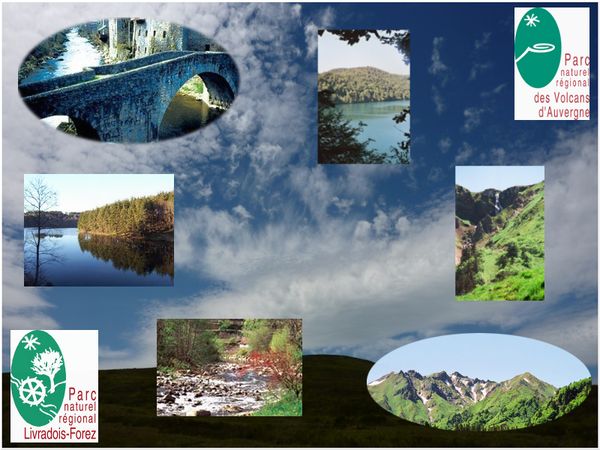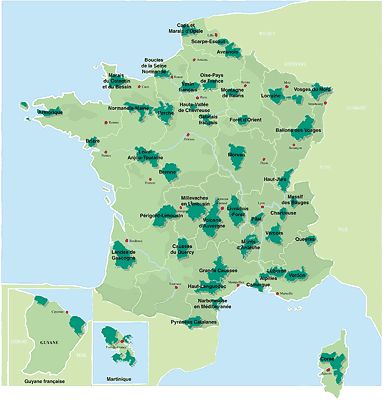The Regional Nature Parks in Auvergne
There are 46 Regional Nature Parks in France, 44 of them are located in Metropolitan France and the last 2 in French Guyana and Martinique. They cover 13% of the territory that is more than 7 million hectares. More than 3 million people share them out over 3825 communes, 61 departments and 21 regions.
In Auvergne, 2 Regional Nature Parks have been created (click below for a full description):

The creation of a Regional Nature Park (RNP) comes from a project established by adjoining communes that wish to preserve both wildlife and cultural inheritance of the consistent territory they share (this territory can sometimes exceed administrative borders). Then, the project obtains the label from the French State if it does concern an outstanding territory that needs to have its landscape, its wildlife and its heritage value protected. Most of the regional nature parks are administered by joint associations made up of member area local representatives (from communes, departments, regions) and sometimes social and economical partner representatives.
In France, the “Regional Nature Park” Label has been in force since the decree of 1st March 1967. Territories are listed by decree from the French Prime Minister for a 12-year renewable period. The management policy of a park is written in its project charter.
The RNPs are spread over both Metropolitan France and Overseas territories. They gather the whole French landscape variety from the Volcanoes of Auvergne to the Camargue, including Brittany, areas of Bocage, mountain landscapes, as well as arable lands or forests.

The RNPs entire area is made up of 37% forests (26% in Metropolitan France), 40% agricultural areas (the half of which is pastureland) and 1.9% construction areas. However, we can point out those figures change considerably depending on regions.
Some parks are located in one single department while others straddle several departments or even sometimes several regions. This is why joint associations have been entrusted the management of RNPs.
The two Regional Nature Parks in Auvergne


Laisser un commentaire